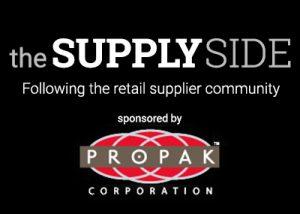The Supply Side: Wal-Mart Stores continues to woo suppliers as a media buyer
by March 7, 2017 4:12 pm 1,082 views

Wal-Mart Stores is known as a retail giant selling everything from bananas to toy bongo drums, but in the past few years the retailer has also become a media buyer, signing on suppliers like General Mills and Nestle as partners in an internal advertising platform known as Walmart Exchange, which is fueled with insights from its internal Data Café.
The Walmart Exchange is another way Walmart U.S. hopes to work with its vast supplier base on targeted marketing solutions that leverage sales data as well as optimize advertising potential for both parties. As more advertising dollars are steered toward digital means, there is a gap being created for suppliers that don’t have the means to track sales generated from digital ads because still about 90% of sales occur in physical stores.
Wal-Mart says it can help suppliers fill in the gap and sell more goods with its Walmart Exchange program. With a network of more than 4,600 stores and 140 million shoppers a week, Walmart believes it is uniquely positioned to connect the digital and physical worlds to understand what advertising is working and what isn’t. The retail giant can also leverage the strength of its Data Café – a big data hub – that crunches and analyzes 2.5 petabytes of data each hour from dozens of social media websites, weather and transactional information totaling more than 200 data streams. Wal-Mart has said its Data Cafe can reduce the amount of time it takes to analyze data and provide needed insights from 2.5 weeks down to about 30 minutes. This major time savings is beneficial to stemming lost sales.
The Data Café stands for Collaborative Analytics Facilities for Enterprise and represents one of the largest data centers in the world as the retailer tries to anticipate shoppers’ needs. The Walmart Exchange allows suppliers to track overall campaign conversion rates against purchases to detect how much offline versus online revenue advertising is driving in real time. Wal-Mart makes this service available for free.
Suppliers needing deeper conversion metrics down to the placement or creative level can get that service, also. Wal-Mart claims to provide expedient results as to how well the ad worked. When signing on as partner in the Walmart Exchange suppliers work together with the media spend in ways that maximize sales with lower overall costs. The plan also allows suppliers to better target the right customers with messaging geared to increase measurable online and offline sales.

The report said there are plenty of reasons why a retailer like Wal-Mart would want to compete with the likes of Google for advertising dollars citing the cost and revenue benefits estimated in excess of $100 million per year. Researchers said smart retailers such as Wal-Mart, Amazon and Target are already in the digital advertising market as sellers. The researchers said Wal-Mart offers a unique view into customer’s shopping behaviors from weekly grocery purchases to Black Friday and Back-to-School events as well as Cyber Monday purchases on Walmart.com.
The report also indicates a resurgence of the brick-and-mortar store which is good news for omnichannel retailers like Wal-Mart and Target. However, researchers said retailers have to make their offline presence an asset that can be leveraged effectively. Consumers are empowered by tons of information available across mobile devices and social sites, but the researchers say with empowerment consumers are also suffering from “analysis paralysis” which has created space at the point-of-purchase for marketers to influence the final buying decision. This is seen as a potential gold mine for suppliers and their retail partners.
The report said 57% of U.S. and Canadian in-store shoppers have not decided what they are going to buy when entering a store. This shopper ambivalence creates an advertising and marketing opportunity at the point of purchase, from digital signage to product messaging delivered via text or email coupons. The researchers said there is an opportunity for retailers and suppliers to continue the dialogue with shoppers after they leave the store which is a compelling proposition.
Bill Atkins, senior vice president of business innovation at Rockfish, said the “anytime marketing” is the next big potential for suppliers and their retail partners. He said Wal-Mart has solidified its position as a media buyer for suppliers, and it will likely become more commonplace in the next couple of years as the retail channels continue to blur. In-store marketing can be managed now that beacon technology is part of Walmart’s infrastructure. Using its rich shopper data experts say it’s only a matter of time before consumers will be texted or emailed about targeted promotions as they shop at Walmart U.S.
Editor’s note: The Supply Side section of Talk Business & Politics focuses on the companies, organizations, issues and individuals engaged in providing products and services to retailers. The Supply Side is managed by Talk Business & Politics and sponsored by Propak Logistics.
